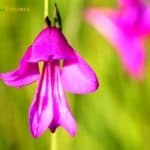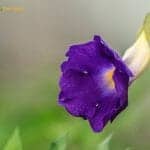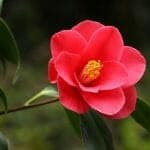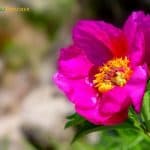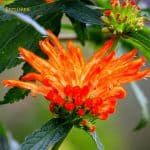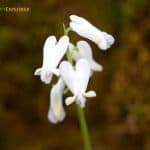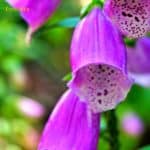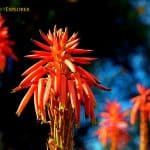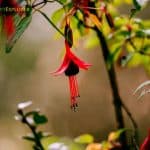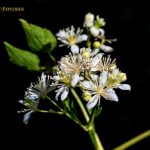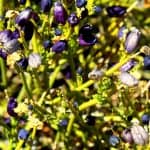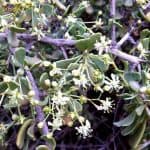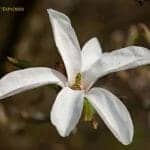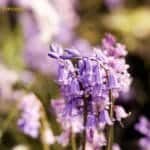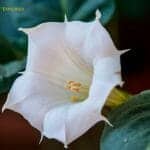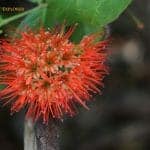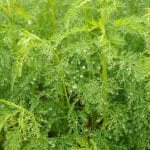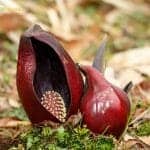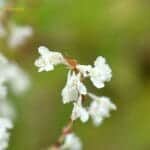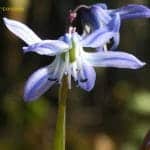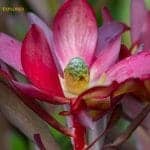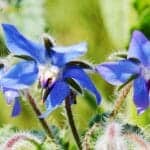april - search results
If you're not happy with the results, please do another search
Shirley Poppy
The Shirley poppy is the name of a group of annual ornamental varieties from the Papaver rhoeas (European wild poppy). There are more than 120 species of poppies in the genus Papaver of the Papaveraceae family. The Shirley Poppy was first produced in 1880 by Reverend William Wilks, pastor of the Shirley parish in England.
Marsh Gladiolus
Gladiolus palustris is a perennial herb of the Iridaceae family and is native to Central and NW Europe. This species can grow to a height of 12-24 inches. The genus Gladiolus is a Latin word that means "a sword". The specific name palustris is a Latin word that means "growing in marshes" the plant's environment.
Thunbergia
Thunbergie has been called "the most gorgeous vine in the world" by some. This blooming, twisted vine looks like morning glory from a distance, and the flowers are similar up close. Thunbergia grandiflora is a vine in the Acanthaceae family. There are 100 to 150 species of flowering plants in the Thunbergia genus.
Marigold
Marigold (Tagetes erecta), known in Mexico as Cempasúchil, holds immense cultural significance. Its vibrant orange and yellow blooms are central to Día de los Muertos (Day of the Dead) celebrations, where the flowers are used to decorate altars and graves.
Japanese Camellia
While many flowering shrubs (Camellia japonica) peak in Summer, the Camellia flower is endemic to Japan and it is unique because it mainly blooms in early spring and late winter. There are nearly 300 species of Camellia, the color of which includes white, pink, and red.
Common Peony
Paeonia officinalis is a perennial herb native to the mountainous regions of Southern Europe. The Common Peony plants belong to the order Saxifragales and the family Paeoniaceae. The genus Paeonia comes from the Greek name Paeon meaning a god’s physician.
February Birth Flowers
Discover the beauty and symbolism of February's birth flowers: violets and primroses. Dive into their rich history, meanings, and unique facts.
Top 15 Genetics News of 2022
Explore 2022's top genetics breakthroughs: AI in gut gene research, zebrafish atlas, NAFLD insights, longevity studies, and more in this comprehensive Genetics News of 2022 overview.
Speedwell
Veronica, also known as Speedwell, is an easy-to-grow, carefree perennial with long spikes of tiny white, pink, blue, or purple petals. With around 500 species, Veronica is the largest genus in the Plantaginaceae family of flowering plants. The precise origin of this plant cannot be exactly determined.
Queen Anne’s Lace
Queen Anne's lace flower looks like lace, and the flower often has a single purple dot in the center. Daucus carota is a biennial herb that belongs to the Apiaceae (carrot) family and is native to Southwest Asia and Europe. The genus includes about 47 species.
Birth Flowers
Explore birth flowers for each month from January to December. Learn their symbolism, meanings, and cultural connections in this comprehensive guide.
Top 15 Biochemistry News of 2022
Biochemistry News of 2022: This series of biochemistry news gives us a detailed account of the recent development in this field, including two proteins (Elastase and histone H2A) in defense against COVID-19 and more.
Top 15 Anatomy And Physiology News of 2022
Anatomy/Physiology News of 2022: Discover breakthroughs in organ transplant technology, multi-organ chips, Alzheimer's research, X-ray immunotherapy, astronauts' brain studies, and more.
Top 15 Microbiology News of 2022
Microbiology News of 2022: Plant-based organic acid kills food-poisoning bacteria, bacteria turned into renewable energy, plastic waste creates antibiotic-producing bacteria, microbes as biofertilizers, antibiotics repurposed, and more.
Top 15 Cell Biology News of 2022
This cell biology news of 2022 series gives a detailed overview of the recent advancements (chromosomal segregation machinery, tiny chemical PROTAC targets cMyc and EZH2 in cancer cells and more).
Drummond’s Phlox
Phlox drummondii is a showy annual flowering plant under the order Ericales. The Drummond’s Phlox can grow to 6-12 inches. Drummonds Phlox is considered one of Texas’ most beautiful wildflowers. In addition, it has been valued as an “exotic” cultivated garden flower in Europe for nearly 150 years.
African Flame Lily
Gloriosa superba is a climbing herb that belongs to the order Liliales. It can grow to a height of 1 meter. The plant is considered a danger to livestock because it has poisonous properties. All parts of G. superba are toxic, especially the tubers. This may cause fatality when eaten.
Wild Dagga
Leonatis ocymifolia is a flowering shrub of the family Lamiaceae. It is a hairy shrub that can grow to 1-2 meters high. The Wild Dagga plants have medicinal value. They are used by different tribal groups for the treatment of aches and pains during the flu.
Squirrel Corn
Dicentra canadensis is a perennial herb with blue-gray and fernlike foliage. This species belongs to the family Fumeriaceae. The squirrel corns are natives to the east of North America. All parts of the Squirrel Corn plant are toxic only in large quantities. However, it can also cause skin rashes.
Royal Bluebell
Wahlenbergia gloriosa is a perennial herb from the Family Campanulaceae. The leaves of the Royal Bluebell are small, opposite, and dark green. Leaves have oblong wavy edges that become broad towards the apex.
Wild Foxglove
Ceratotheca triloba is an annual plant that belongs to the family Pedaliaceae. They can grow to a height of 1.5 to 2 meters. Ceratotheca triloba is the only species of the genus Ceratothica that is found in South Africa.
Waling-Waling
Vanda sanderiana is an endemic orchid growing wild only in the rainforests of the Philippines. However, it is now grown and cultivated all over the world. This plant belongs under the order Asparagales. The Waling-Waling orchid was discovered in 1882.
Mulla Mulla
Ptilotus exaltatus is an annual herb endemic to Australia. This plant is a member of the order Caryophyllales. Ptilotus has about 100 species. All of the species, except 1, are endemic to Australia. For example, the beautiful colored flowered P. exaltatus is native to Australia.
Spring Beauty
Claytonia virginica is a perennial herb under the order Caryophyllales. This species is a trailing plant that can grow to 2-16 inches. Claytonia virginica has medicinal value. This plant has been used medicinally by the Iroquois for children suffering from convulsions.
Krantz Aloe
Aloe arboresens is a perennial succulent of the order Asparagales. It can grow to a height of 2-3 meters. The bitter juice of the Aloe arborescens has medicinal uses. For example, the burn victims of WWII were treated with the concoctions of Aloe.
Qantuta
Cantua buxifolia is an evergreen shrub of the order Ericales. This plant can grow to a height of 13 feet and is a native of the high valleys of the Yungas and Andes mountains in western South America.
Wreath Lechenaultia
Lechenaultia macrantha is a small herbaceous plant from the Goodeniaceae family. It usually grows 150 mm or less. The Wreath Lechenaulta flowers, when viewed from above, show an attractive wreath-like form.
Top 15 Immunology News of 2021
The 2021 discoveries in Immunology showcase the recent developments and their relevance during the upsurge of COVID-19 cases. This treatise describes the development of immunology as a scientific discipline focused on its foundation. Let us glance at these 2021 research outcomes from a broader perspective.
Top Biotechnology News of 2021
These 2021 biotechnological events provide us with a thorough understanding of our most recent developments in the fields of Synthetic Biology, Stem cell and Tissue engineering research, Genome editing and decoding the entire human transcriptomics, Construction of cell-free vaccine, and various other wonders.
Top 15 Botany News of 2021
Top botany news of 2021 give us a deep insight into our latest advancement in botany and plant science related to the evolutionary aspect, conservation of endemic species, global warming, and the mechanism to fight against them.
Top 15 Ecology News of 2021
This series of 2021 ecology news gives us a detailed overview of the recent development in this field. Commencing with climate change, global warming, alternative ways for renewable energy resources, the role played by scavengers in our society, and other global aspects of management and nature-dependent climate solutions.
Top 15 Microbiology News of 2021
These topics focus on the discoveries and developments in Microbiology in 2021. Research and developments on various topics, such as engineered bacteria, oil-degrading bacteria, and symbiotic relationship between root colonizing bacteria and host plants, have been included here.
Neblina Uakari
The Neblina uakari (Cacajao hosomi), black-headed uakari, is a recently described monkey species from the extreme northwest of the Brazilian Amazon and adjacent southern Venezuela. Neblina uakari's English name refers to the Pico da Neblina, which marks its known distribution approximate center.
Sunda Pig-Tailed Macaque
The pig-tailed macaque (Macaca nemestrina), also called the Sundaland pig-tailed macaque and Sunda pig-tailed macaque is a medium-sized macaque native to southern Thailand, Indonesia, and Malaysia. Pig-tailed macaques also have long legs and hairless snouts.
What Do Orioles Eat? Explore Oriole Diets, Hunting & Eating Habits
Orioles are omnivorous birds grouped in 2 different families. Explore what do orioles eat, orioles diet by types, and what eats orioles here.
Old-Man’s Beard
Clematis ligusticifolia is woody or semi-woody climber from the Ranunculaceae family. This desert flowering plant can grow up to 20 feet or more. All parts of the plant can cause severe irritation in the mouth if eaten.
Asian Spider Flower
Cleome viscosa is an annual herb that belongs to the Cleomaceae family. It is synonymous with Polanisia viscosa. The extracts from the flower and leaves of Cleome viscosa manifest effective antimicrobial activity.
Turpentine Broom
Turpentine Broom is a shrub of the family Rutaceae. This species is native to the southwestern United States and northern Mexico deserts.
Salt Tree
The Salt tree is a drought-tolerant shrub of the Order Sapindales. It can grow up to 2.5 meters. This plant is native to the Northern African desert areas. The Salt tree has fruits of a triangular drupe.
Apache Plume
Apache Plume (Fallugia paradoxa) is a hardy shrub native to the deserts of northern Mexico and the southwestern U.S. It produces simple, white, five-petaled flowers resembling small roses, followed by feathery pink seed plumes that look like a cloud.
Top 15 Anatomy News of 2021
These 2021 noteworthy advancements and discoveries in Anatomy also speak to scientists' increased interest in the brain's structure, function, and disorders. Explore the top 15 anatomy and physiology news of 2021.
Snow in Summer
Snow-in-summer (Cerastium tomentosum) offers a solid option for adding botanical beauty to retaining wall crevices and stones in a rock garden. Additional flowering usually occurs in smaller quantities all through the summer.
Edulis Tulip
Amana edulis (formerly Tulipa edulis) is a bulb-forming perennial with a flower that resembles a tulip. The Amana edulis plant is about 15 cm. It is native to Japan.
Star Magnolia
Native to Japan, Star Magnolia is a small tree that can grow to 5 to 8 feet and spread 15 ft in maturity. Star Magnolia grows well in full sun and partial shade.
Wisteria
The Japanese Wisteria is a beautiful, deciduous climber with a height of 10 to 30 feet and a spread of 10-20 feet. It is native to temperate Asia, Japan. This perennial plant has a life span of 50 to 100 years or even longer.
Top 15 Biochemistry News of 2021
This top 15 Biochemistry News of 2021 series emphasizes various biochemistry research and developments such as the relationship between enzyme and substrate concentration, the mechanism for RNA-protein interaction and more.
Throatwort
Intricate and delicate, Throatwort (Trachelium caeruleum) dazzles with its thick cushions of blue-violet flowers and gives any garden or flower arrangement an elegant, lace-like charm. The flowers come in shades of white, green, pink, purple, and blue, but the flowers of the white varieties age more quickly.
Thornapple
Datura stramonium, commonly known as thornapple, Jimson weed, devil's trumpet, or devil's snare, is a flowering plant that belongs to the Solanaceae (nightshade) family. About 10 species of thorn apple are common in tropical and temperate climates around the world.
Tassel flower
The Tassel flower is a small, intriguing plant on the front edge, producing tiny scarlet-orange pompoms that appear to float in mid-air when viewed from a distance. Also known as Cupid's shaving brush or Emilia, the tassel flower is a genus of over 100 species in the Asteraceae family found primarily in the tropics of the Old World.
Tares
Tares (Lolium temulentum), commonly known as Darnel, cockle, Darnel ryegrass, or Poison Darnel, is an annual flowering plant of the genus Lolium Poaceae family. The flower is a large panicle. The panicles are erect and light, and when ripe, they are black.
Southernwood
Southernwood may seem like a minimal spread plant, but it has toured the world in the past few centuries. Despite its name, Southernwood is not a tree. Artemisia belongs to the family Asteraceae, which includes about 2,000 flowering plants. This plant is native to Africa and Eurasia but naturalized in scattered locations across North America.
Viburnum
The Viburnum (aka snowball) is an old-fashioned shrub known for its many beautiful clusters of white snowball-shaped flowers. You can easily accommodate your desires as 7 different viburnum shrubs are called snowball bushes including Japanese viburnum.
Snapdragon
Snapdragons (Antirrhinum majus) are an annual classic cultivated for generations. This annual excellent season's flowers go perfectly with violas and pansies. Around 20 species in the genus are native to the Mediterranean, from Morocco and Portugal to southern France, Syria, and Turkey.
Skunk Cabbage
Skunk cabbage flower is not a real cabbage but rather belongs to a primarily tropical family of plants in the Araceae (Arum) family. There are 3 species of perennial plants in the Symplocarpus genus. This flowering plant is a low-growing plant that grows in moist hill slopes and humid areas of eastern North America.
Silver Lace Vine
Silver Lace Vine (Polygonum aubertii) is a popular but controversial climbing plant because of its vigorous growth habit. This drought-tolerant vine wraps around porch pillars, fences, or pergolas. Polygonum is a genus of around 130 species of flowering plants in the Polygonaceae (knotweed and buckwheat) family
Sedum
In botanical gardens or gardening stores, you may have found plants named "Sedum" that are so different that you wonder if they are related to one another. The genus Sedum is part of the large Crassulaceae (stonecrops) family named for their ability to grow in cold, dry areas with little water.
Scille
The Scilla genus includes around 80 species of bulbous herbaceous perennial plants in the Asparagaceae family, a subfamily of the Scilloideae. Most flowers bloom in early spring, but some bloom in fall. Several species of Scilla are popular as ornamental garden plants. Each flower has 6 petal-like tepals, and each tepal has a distinctive dark blue midrib (median stripe).
Safari Sunset
The Leucadendron 'Safari Sunset' is a favorite of gardeners and florists is an evergreen multi-stemmed shrub with vivid, deep red bracts forming exceptionally long stalks (over 1m or 3 feet) at the tips. Perfect for use in easy-care gardens and aquifers, this tall, vigorous Leucadendron is an excellent choice for hedges, screens, or as an exhibition plant.
Rosemary
Rosemary (Rosemarinus officinalis) is an evergreen perennial aromatic shrub in the Lamiaceae (mint) family native to the Mediterranean, northwestern Spain, and Portugal. There it grows into a 4- to 6-foot-tall shrub. The genus Rosmarinus includes 3 different species (Rosmarinus tomentosus, Rosmarinus eryocalix, and Rosmarinus officinalis).
Rock Soapwort
Saponaria ocymoides, commonly referred to as rock soapwort, is a semi-perennial herbaceous perennial plant native to the rocky slopes of the mountains of south-central and southwest Europe.



